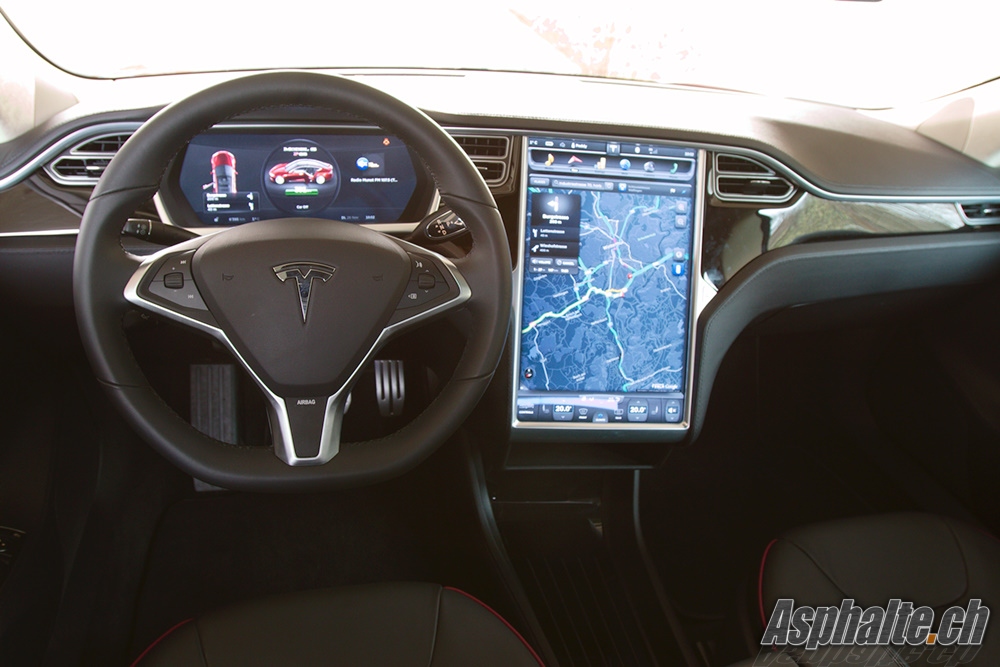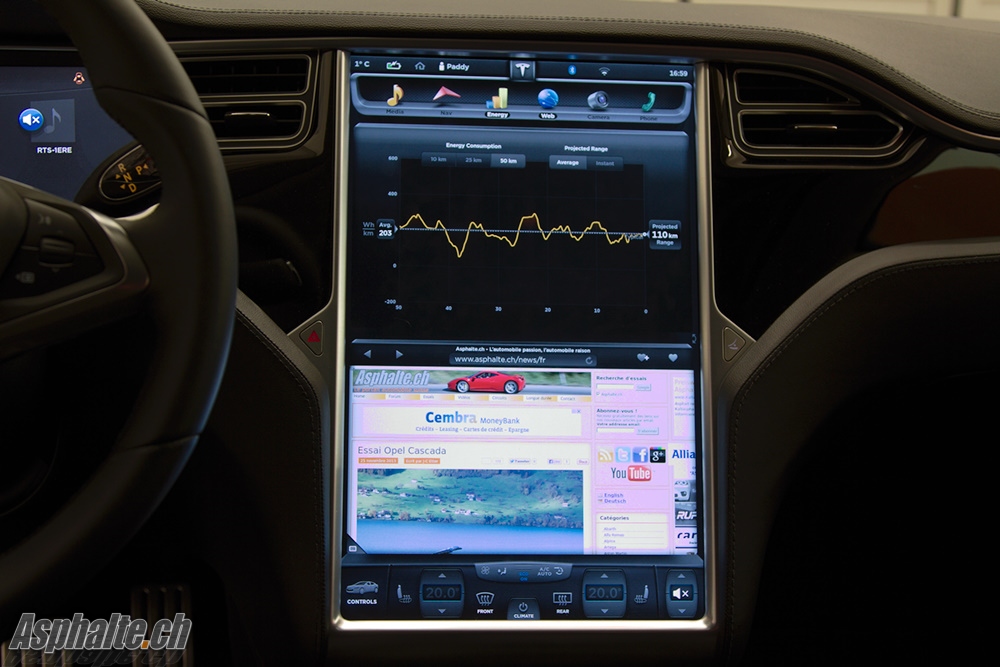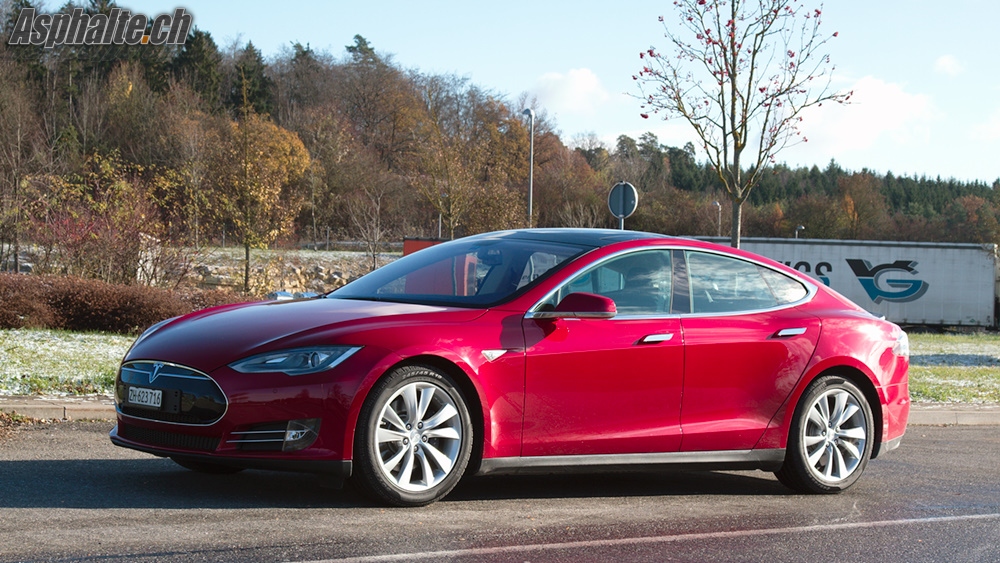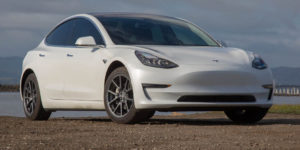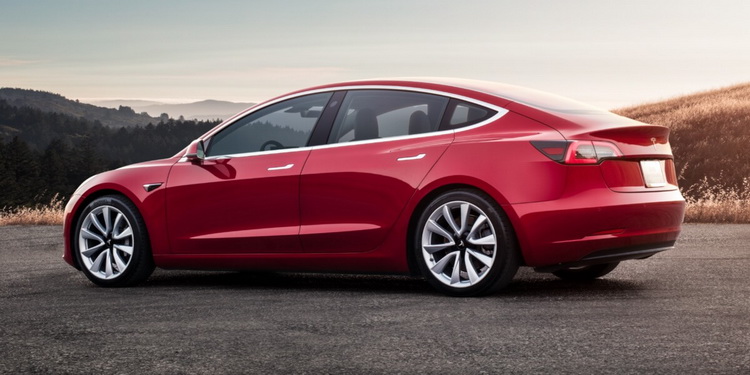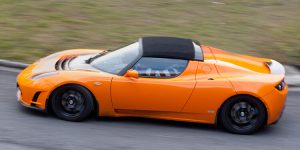Driven: Tesla Model S P85+
It is an unusual layout, but it does not take long to get used to it. All control functions can be swiftly called by a soft key located intelligently at the lower left corner of the graphical interface, making it easy to select it without looking. The Driving sub-menu allows to alter the ride height. The lowest setting has been disabled by firmware to prevent risks of fire hazard in case of underbody damage, following a few isolated incidents in the US. Steering assistance can be adjusted, traction control disabled, and two settings are offered for creep and regeneration mode. No damper setting in sight however, a rather surprising omission. Customers will have to get used to an unusual firmness for the luxury sedan segment.
The graphical interface is superb, very polished, with gorgeous renderings of the car and a smart grouping of functions in different tabs. The lower band provides access to the climate control and heated seat settings, while the upper band gives access to the main functions. The thin status bar at the top will look familiar to smartphone users. The instrument cluster in front of the driver is a LCD display as well, with conventional instruments in the center, the satnav map or energy chart on the left, and music information on the right.
Crossing the German border brings me to my second objective: performance. Electric power offers the distinct advantage of peak torque from start (600 Nm from 0 to 5100 rpm in the case of the Model S Performance), in contrast with an Internal Combustion Engine which needs an optimum rate of revolutions to deliver its maximum force. The downside of electric motors is that torque tends to fall with engine revs, and the absence of any gearbox (the motor drives the wheels through a fixed “single gear” ratio) does not allow it to operate in its optimum rev range up as the speed builds up. In other words, the faster you go, the less you get. As a consequence, Tesla claims a top speed of 210 km/h (130 mph), which is remarkably slow for a 416hp car. I had no doubt whatsoever that the Tesla Model S torque would deliver meaty acceleration from 0-100 km/h, but I was far more skeptical about elasticity at freeway speeds. The A81 leading to Stuttgart, birthplace of some of the mightiest autobahn rockets from Porsche and Mercedes-Benz, felt like an ideal playground to study the matter in a lawful manner.
There were are, Model S and I, sitting on a rest area along a derestricted stretch of autobahn. Our purpose is not to perform accurate measurements, but to put driving impressions in a quantitative context. In spite of the significant kerb weight (2102 kg, with 49.6% on the rear axle, barely 2kg apart from Tesla figures in spite of the optional glass roof), acceleration is massive. The immediate availability of ample torque delivers very strong and constant acceleration, while the powertrain emits a very spaceship-like vuiiiiiiii whine. A 0-100 km/h below 5s (4.4s according to Tesla) is ridiculously easy. The 100-150 km/h dash is disposed of in less than 5s as well. This would leave a Porsche Panamera Turbo S 3 to 4 lengths behind. The thrust of the electrical motor subsides from 150 km/h and the top of speed of 210 km/h (indicated) is reached relatively easily. I repeat the exercise a second time, and the deluge of torque to the rear wheels breaks traction, triggering an abrupt intervention from the stability control system.
Ask any prospective Model S after a test drive and the first comment is invariably the same, some expletive about amazing acceleration. And it is undeniably true: the Model S pulls really hard till 150 km/h (90 mph). Elasticity in all usual driving situations is supremely effortless, a level of immediacy and urge in torque delivery that no internal combustion engine can match. In one ankle movement, peaceful cruising turns into a surgical strike with no delay, no turbo lag, no downshift or hick-up. A deluge of electrons poured from the Lithium Ion batteries to the electric motor through elaborate power electronics. The promise of electric drive is entirely fulfilled in that respect, with quantitative and qualitative performance of a very high caliber. The experience is of course not as visceral as powertrains usually termed as “noble”, but it is refined and playful at the same time. The Tesla Model S delivers the claimed world class performance, even at freeway speed, with the notable exception of the Autobahn were most upscale turbodiesel will smoke – in all senses of the word – the Tesla as soon as traffic allows to drive well beyond 150 km/h.

